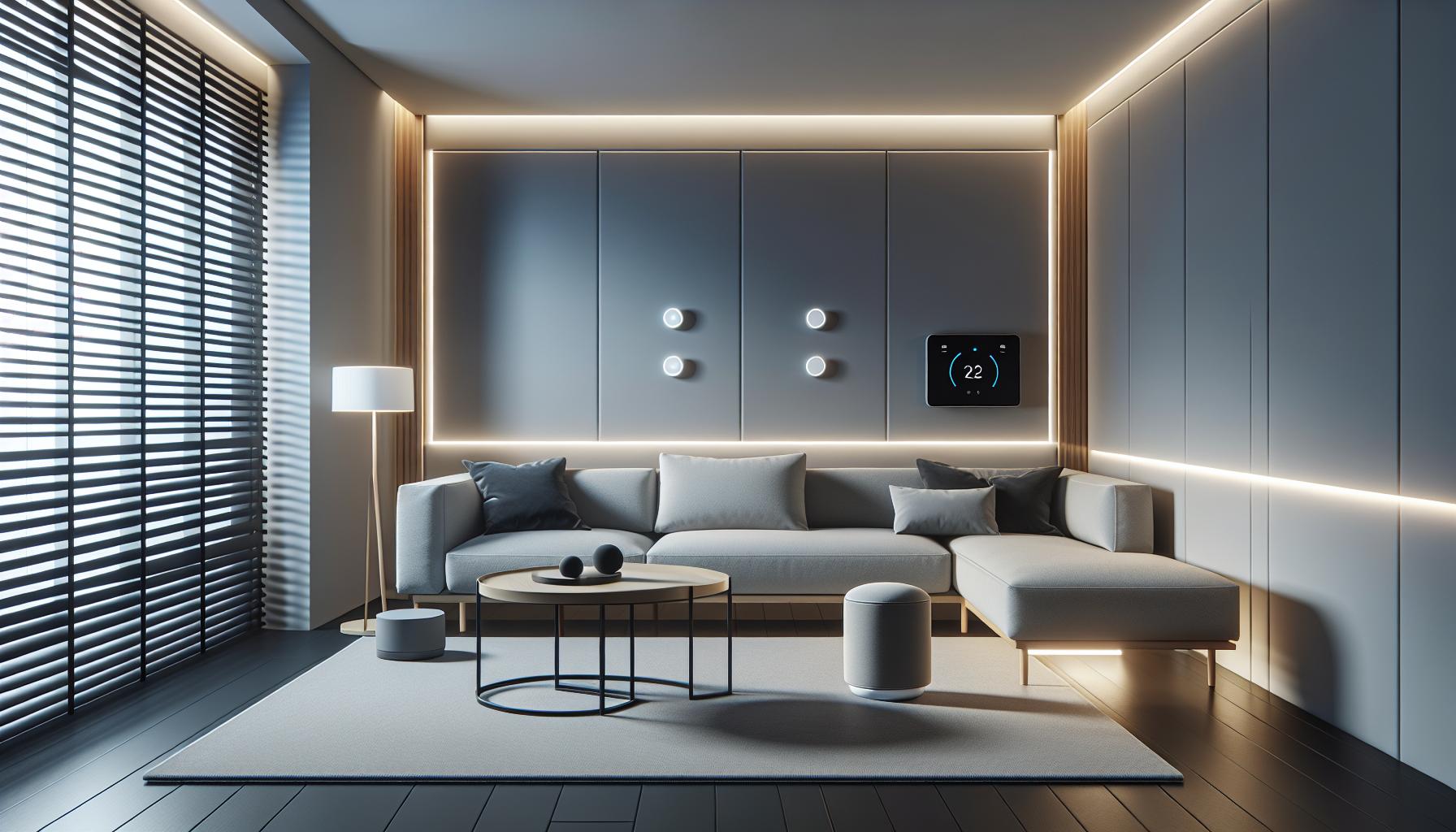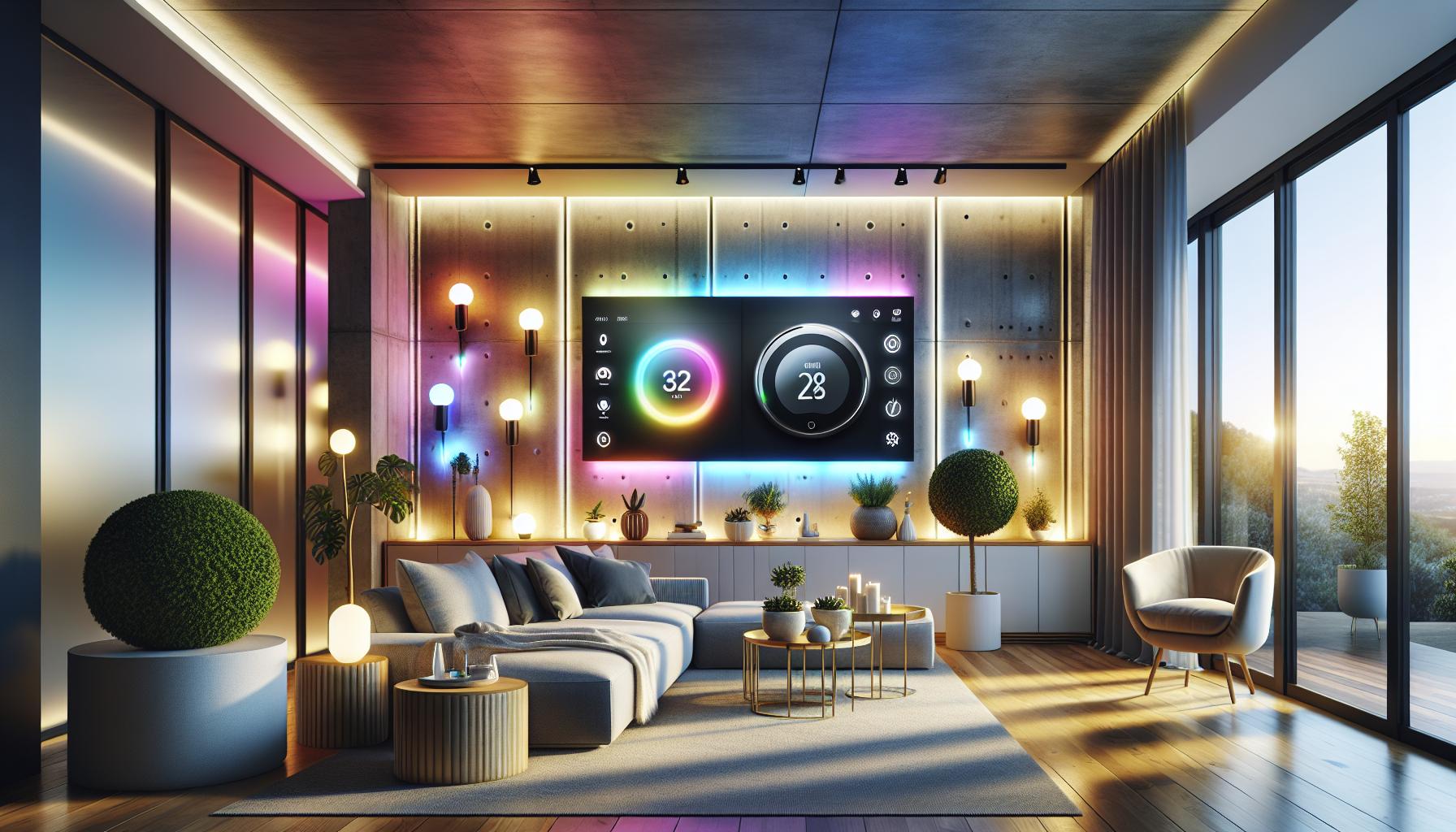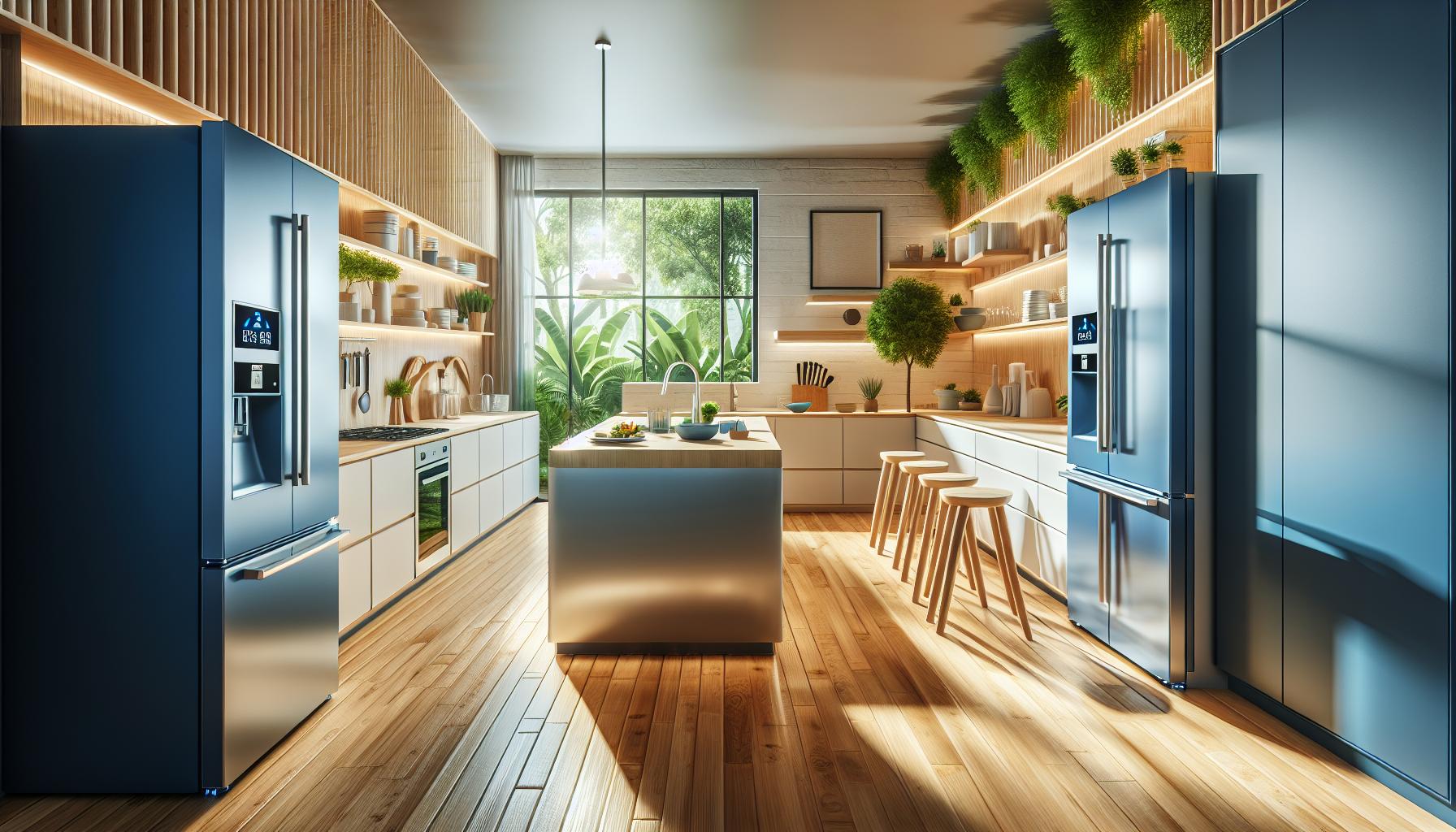Key Takeaways
- Integration of Technology: Smart home design seamlessly incorporates interconnected devices, enhancing comfort, convenience, and aesthetics in modern living spaces.
- Convenience and Efficiency: Automation of everyday tasks leads to time savings, while smart devices optimize energy usage, promoting cost-effectiveness and sustainability.
- Enhanced Security: Smart security systems provide real-time monitoring and alerts, offering homeowners peace of mind and increased safety.
- Customization Options: Homeowners can personalize features to fit their unique lifestyles, ensuring a tailored experience that meets individual needs.
- Increased Property Value: Homes equipped with smart technology have a higher appeal to buyers, often resulting in better resale values.
- Sustainable Choices: Incorporating energy-efficient appliances and eco-friendly materials not only reduces environmental impact but also contributes to healthier living spaces.
In today’s fast-paced world, smart home technology is transforming the way people live. From energy-efficient appliances to advanced security systems, these innovations not only enhance convenience but also elevate home design. Homeowners are increasingly looking for ways to integrate technology seamlessly into their living spaces, creating environments that are both functional and stylish.
Smart home design ideas offer endless possibilities for customization, allowing individuals to tailor their spaces to fit their lifestyles. Whether it’s optimizing lighting with smart bulbs or incorporating voice-controlled devices, the right design choices can make a home more comfortable and efficient. Embracing these trends not only adds value to a property but also creates a modern sanctuary that meets the demands of contemporary life.
Smart Home Design Ideas
Smart home design focuses on integrating technology seamlessly into living spaces. This approach enhances functionality, comfort, and aesthetics while meeting modern homeowners’ needs.
The Concept of Smart Homes
Smart homes utilize interconnected devices that communicate and automate various functions. These systems often include smart lighting, thermostats, security cameras, and appliances. Homeowners can control them remotely via smartphones or voice assistants, promoting convenience and energy efficiency. The concept emphasizes creating an environment where technology simplifies daily tasks, streamlining routines and enhancing overall living experiences.
Benefits of Smart Home Design
Smart home design offers numerous advantages:
- Convenience: Automation of everyday tasks, such as adjusting thermostats or controlling lighting, simplifies life and saves time.
- Energy Efficiency: Smart devices optimize energy usage, reducing costs. For instance, smart thermostats learn user habits and adjust temperatures accordingly.
- Enhanced Security: Smart security systems provide real-time alerts and remote monitoring, ensuring peace of mind for homeowners.
- Customizability: Homeowners can tailor smart home features to fit their lifestyle, allowing for personalized experiences.
- Increased Property Value: Homes equipped with smart technology attract buyers, often commanding higher resale values.
These benefits collectively demonstrate how smart home design improves living experiences and adds tangible value to properties.
Innovative Smart Home Design Ideas

Innovative smart home design enhances convenience and functionality through the integration of advanced technology. Several ideas showcase how to elevate modern living with smart solutions.
Modern Technology Integration
Incorporating modern technology into home design transforms everyday living. Devices such as smart thermostats, intelligent locks, and automated lighting systems streamline household management. Smart speakers, like Amazon Echo and Google Nest, can control multiple devices via voice commands, providing a hands-free approach to home automation. Energy-efficient appliances, such as smart refrigerators and washing machines, optimize utility consumption while offering remote monitoring capabilities. Integrating technologies like smart blinds or shades adjusts natural light levels throughout the day, improving comfort and energy efficiency.
Creating a Seamless User Experience
A seamless user experience is essential in smart home design. Unified control systems allow users to manage all devices from a single app, simplifying interactions. Customizable interfaces on smartphones and tablets enable homeowners to personalize their settings easily. User-friendly designs ensure accessibility for all family members, regardless of age or tech-savviness. Advanced automation features, like scheduling tasks and creating routines, ensure that devices respond appropriately to different activities, enhancing daily life. Thoughtfully designed layouts foster connectivity between smart devices, maximizing functionality and efficiency throughout the home.
Popular Smart Home Features

Smart home features significantly enhance comfort, convenience, and efficiency. These innovations transform traditional living spaces into dynamic environments tailored to individual needs.
Smart Lighting Solutions
Smart lighting solutions allow for complete control over illumination. Homeowners can adjust brightness and color through smartphone apps or voice commands. LED smart bulbs are energy-efficient and versatile, allowing scheduling and automation to match daily routines. Whether it’s creating ambiance for gatherings or optimizing task lighting, smart lighting enhances aesthetics while reducing energy costs.
Automated Climate Control
Automated climate control systems optimize home temperature intelligently. Smart thermostats learn user preferences and adjust settings accordingly, ensuring energy savings without sacrificing comfort. Homeowners can monitor and control their heating and cooling systems remotely. Integration with weather forecasts enables proactive adjustments, maintaining ideal indoor conditions year-round. This feature also adds to energy efficiency, reducing costs and environmental impact.
Sustainable Smart Home Design

Sustainable smart home design incorporates technology and eco-conscious choices, promoting efficiency and reducing environmental impact. These elements contribute to a healthier living space and lower utility costs.
Energy-Efficient Appliances
Energy-efficient appliances significantly lower energy consumption, making homes greener. Devices like Energy Star-rated refrigerators, dishwashers, and washing machines use 10-50% less energy than conventional models. Smart technology enables remote monitoring and adjustments, optimizing performance. For instance, smart thermostats learn user patterns and adjust settings automatically, enhancing both comfort and energy savings.
Eco-Friendly Building Materials
Eco-friendly building materials contribute to sustainable smart home design by minimizing environmental impact. Options like bamboo flooring, recycled metal roofing, and low-VOC paint reduce carbon footprints and improve indoor air quality. Incorporating these materials enhances not only aesthetic appeal but also durability and efficiency. Furthermore, insulation made from recycled materials helps regulate temperature, complementing smart climate control systems. Sustainable materials create a harmonious balance between modern technology and environmental responsibility.
Merging Technology With Everyday Comfort And Style
Smart home design is revolutionizing the way people live by merging technology with everyday comfort and style. By embracing innovative solutions like automated lighting and climate control, homeowners can create spaces that not only enhance convenience but also reflect their personal tastes.
Sustainable practices further elevate smart home design, ensuring that modern living is both efficient and environmentally friendly. As technology continues to evolve, the possibilities for creating personalized and functional living environments will only expand.
Investing in smart home features today means enjoying a more connected and efficient lifestyle while increasing property value for the future.